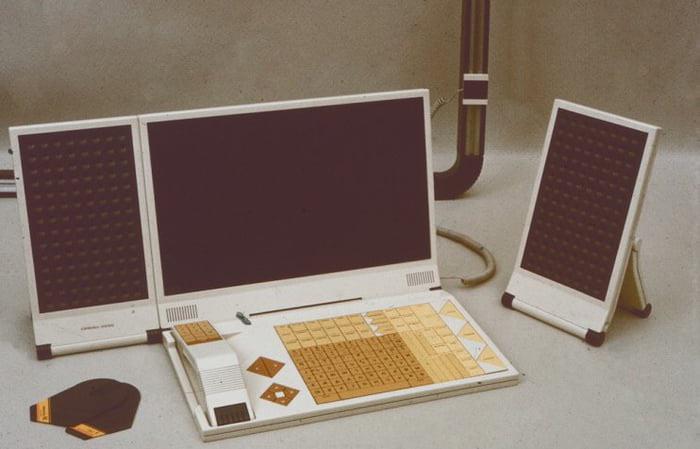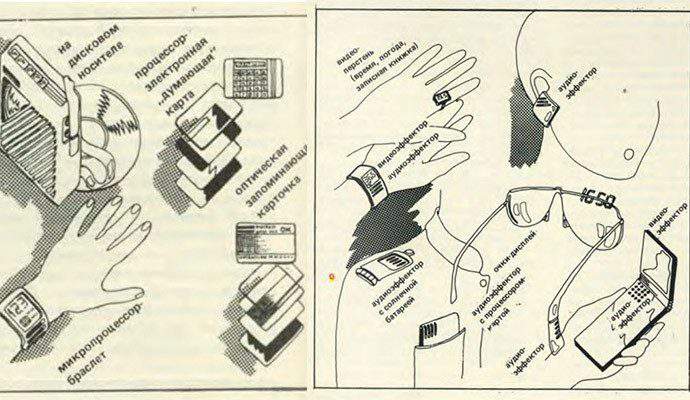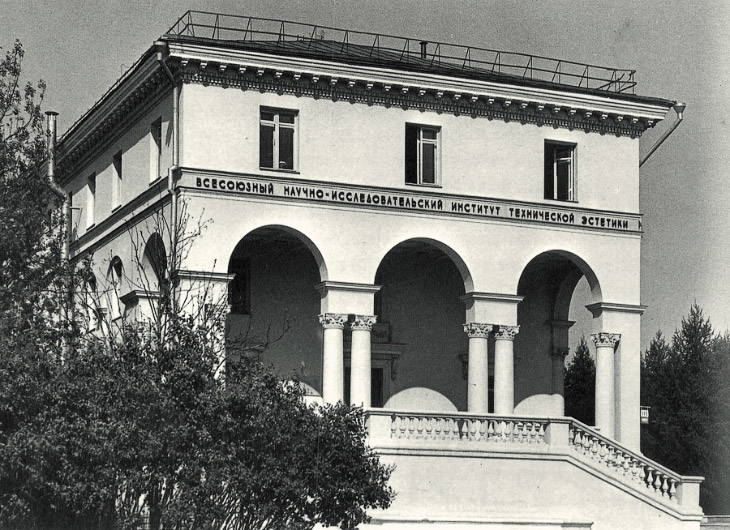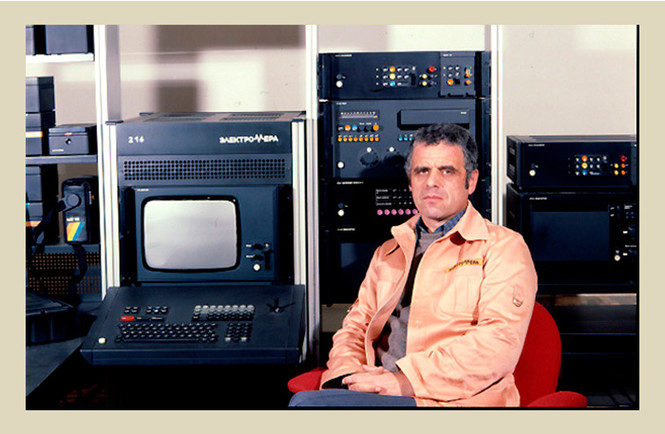VNIITE planet of the whole: how in the USSR the system of “smart home” was invented

In the mid-1980s, the USSR not only played perestroika and reworked Simca 1307 into Moskvich-2141, but also tried to predict the future of the average consumer. It was quite difficult, especially in conditions of total deficit. However, Soviet scientists were able to predict the emergence of laptops, smartphones, smart glasses and wireless headphones.
It's funny that even then, 30 years ago, elements of wearable electronics were well thought out:
“Here, the most unexpected solutions are possible: for example, sunglasses, at the user's command, turn into a display showing the time or other necessary information (pulse rate, body or ambient temperature).”

This is a project born in the depths of the All-Union Scientific Research Institute of Technical Aesthetics (VNIITE). With some reservations, this project can be called a system of "smart home". The institute calculated the main drawback of all household devices - the lack of a unified system that could combine a TV, tape recorder, video recorder, computer, printer, speakers. And offered a solution to this problem in the magazine " Technical Aesthetics " in September 1987.
')
So, get acquainted. Before you is the Super-functional Integrated Communicative System - SPHINX, created by Igor Lysenko, Alexey and Maria Kolotushkin, Marina Mikheeva, Elena Ruzova under the leadership of Dmitry Azrikan. The developers described the project as one of the possible design solutions for the home television and radio complex of 2000. It was not so much a project of a thing, as a project of a principle of interaction of consumers with sources of information.

Almost all devices are easy to identify, right?
The idea seems rather simple and rational. The SPHINX was supposed to combine all input and output devices with a common processor, which also serves as a data warehouse and means of receiving and transmitting it outside. The information received by the processor was distributed over the screens, columns and other blocks. So that these blocks could be placed throughout the apartment (for example, a movie with an audio track goes to the same room, a video game to another, a computer with work tasks operates in the office, and an audio book is read in the kitchen), it was suggested to lay in the apartment (perhaps even during the construction of the house) the so-called "busbars". That is, some universal cables that could power the electronics and control it through the processor.
Quote from the article:
“SPHINX is the electronic equipment of the future home. All work on the reception, recording, storage and distribution of various types of information is carried out by the central apartment processor with a universal storage device. The latest research gives reason to hope for the emergence of such a universal carrier in the near future. It will replace (first complement) records, audio and video tapes, current CDs, photos and slides (still frames), printed texts, etc. ”

On the left is a block with a SPHINX central processor. These strange "petals" in the tail unit are information carriers, analogs of modern SSD, HDD, flash drives, or, in extreme cases, CD. In the USSR, they were confident that at first the universal data carrier would be disk-based, and then crystalline, without moving mechanisms in reading devices.
In the middle - two options for a large control panel. Blue - touch, in the recess has an additional small hand held remote. White - pseudo-sensory, in the recess - handset. It could be connected to the screen in the form of a tablet and receive something resembling a modern laptop. To the right of the keyboard is a pair of “more - less” keys to adjust any parameters.
On the right is a small hand-held remote with a docked display. The diagonal arrangement of the buttons, as it was then thought, is extremely convenient for working with the remote control. Each key should be highlighted, if necessary, you can activate the sound response to pressing.
Note that SPHINX devices were divided into three groups:
- Wearable
- Housing related
- Related to transport

It is easy to find out “smart bracelets” and watches, “smart home” and car on-board computers.
What could be done with the help of the SPHINX? Yes, the same thing that we do today: watch TV and movies from the library, listen to music, get weather data, make video calls.
“Here you can watch movies, video programs, TV shows, works of art, other images and phonograms, collective computer games, fragments of a family album can also be displayed here. The family can arrange friendly space bridges or business meetings. Additional information (time, weather, references, other channels, etc.) can be shown on the cut-in frame ",- dreamed in the USSR.
Provided for both wired and wireless connection to other devices. The developers were confident that the processor will be able to receive information and retransmit it to other consumer devices via a radio signal (a prototype of Wi-Fi). The central processor had to contain a block that converts various types of signals into digital form.
The processor itself acted only as a means to distribute tasks to other devices. Therefore, it was not required to be kept in a visible place. True, if you push the device somewhere far away, then it will be difficult to insert “petals” - the keepers of information. It was assumed that each such disc is responsible for leisure or workload for one family member. That is, for example, films and games are recorded on one medium, music and educational programs are recorded on the other, business and creative applications are on the third, etc.

The necessary content of the central processor was supposed to broadcast to the display.
“SPHINX allows you to start equipping an apartment with any primarily necessary monofunction. The number of devices does not grow in direct proportion to the number of users and functions, but rather insignificantly. ”- in fact, this is the idea of a smartphone. How many applications (functions) do not install, and the size of the device does not change. Is that a memory card will have to insert more.
The system looked very nice , but all the possibilities of the SPHINX, like the system itself, looked good only on the pages of magazines at that time. There was no question of creating a workable layout, let alone introducing an idea into life. The Soviet Union was rapidly approaching the final stage of disintegration, with coupons for sugar, soap and meat, with heightened ethnic conflicts and impoverishment of the population. Who were interested in the fantasies of some designers and engineers?
And then what?

As for VNIITE, until the mid-2000s nothing interesting happened there. The state has changed, and if earlier almost all products manufactured in the USSR passed through VNIITE, now this was not the case. The institute was impoverished, lost branches in other cities and many employees, closed the design center on Pushkin Square. The staff was mainly engaged in scientific work with almost the same composition as in the 80s.
However, in the middle of zero, the situation has changed. New people came, new ideas appeared. And in 2013, the research institute was attached to the University of RTU MIREA by order of the Ministry of Education and Science of the Russian Federation dated 461. At the same time, its activities did not end. On the contrary, since 2014, the annual International Industrial Design Day has been held (including on the territory of Skolkovo). The ergonomic laboratory started up again, the theory and methodology department and the project department were resumed, government assignments and educational projects appeared. From the most awaited projects we single out the “Ergonomic Atlas”. Why is he important? Sergey Moiseyev, Director of Institute Development:
“Since 1971, anthropometric indicators have not been measured in our country, and their physical parameters change over time. The atlas is already at the final stage of work, it will be released soon. This is an important thing, because now in Russia standards for clothing, standards for labor protection, workplaces - all this corresponds to the measurements of 1971. "

As for the project manager SPHINX Dmitry Azrikan, he moved to the United States, where he became the design director of International Promotion Inc. In Chicago, and received more than a hundred certificates for industrial samples and patents of Russia and the United States. And the author's design training program developed by him at Western Michigan University (USA) was approved and received a NASAD (National Association of Schools of Art and Design) certificate.
Dmitry, by the way, finalized his idea. In 1990 his concept of the “ electronic office ” Furnitronics was presented in Spain. And at the exhibition in 1992 in Japan, a flurry of emotions caused the futurological concept " Floating Islands ".
What else is interesting you can read in the blog Cloud4Y
→ How neurointerfaces help humanity
→ Cyber insurance on the Russian market
→ Light, camera ... cloud: how clouds change the movie industry
→ Football in the clouds - fashion or necessity?
→ Biometrics: how is it with us, and with "them"
Source: https://habr.com/ru/post/459156/
All Articles